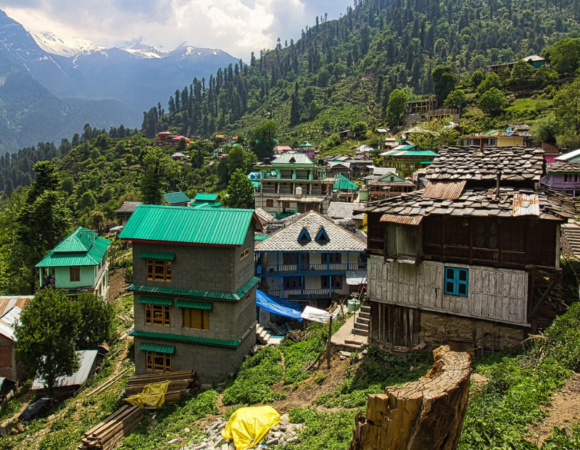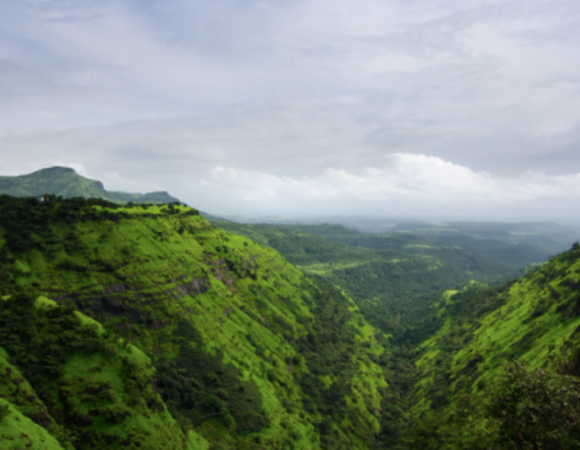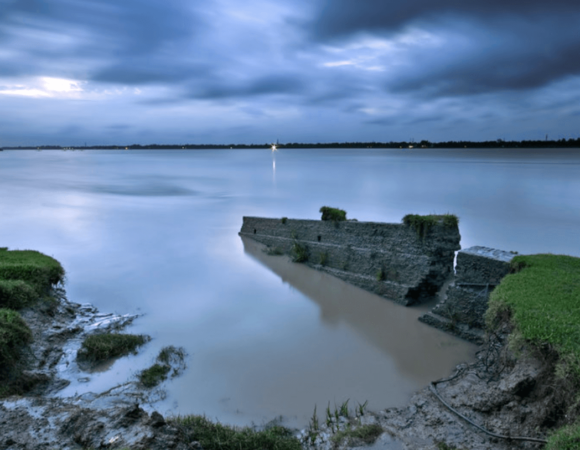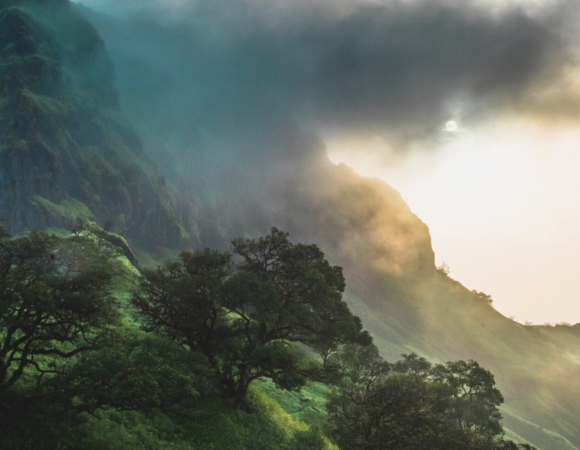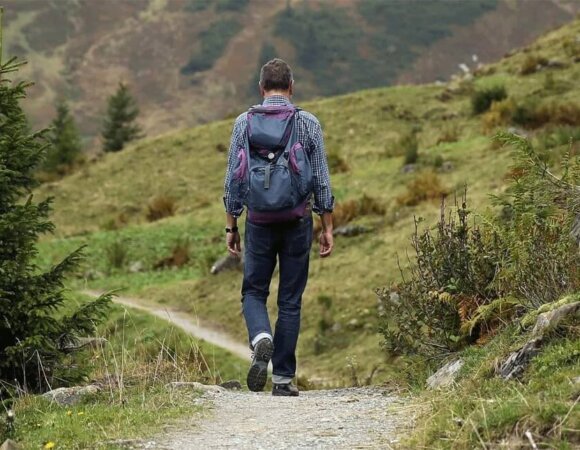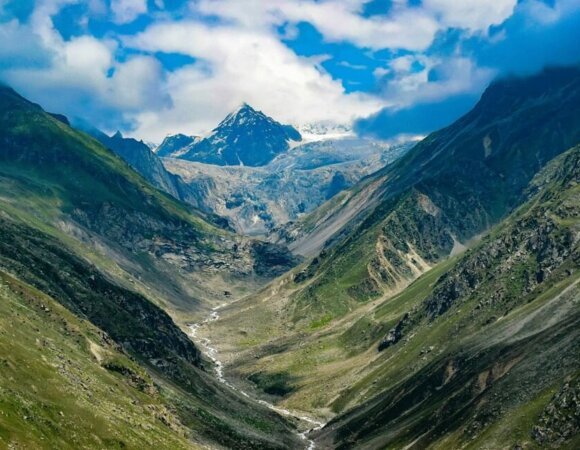Everest Base Camp Trek Guide 2024: History, Keypoints, Highlights, Technicality, Itinerary & FAQ’s
Table of Contents
ToggleEverest is the most idolized and ultimate mountain peak in the world for every mountain lover. The grandeur of the mountain speaks for itself so when Everest Base Camp Trek is talked about, the mountaineers lunge at the opportunity to see the majestic natural wonder in its natural habitat. The Everest Base Camp Trek becomes even more interesting when it offers a direct view of 4 highest peaks out of 6 in the world including Mt. Everest (8848 m), Mt. Cho Oyu (8201 m), Mt. Makalu (8470 m), Mt. Lhotse (8516).
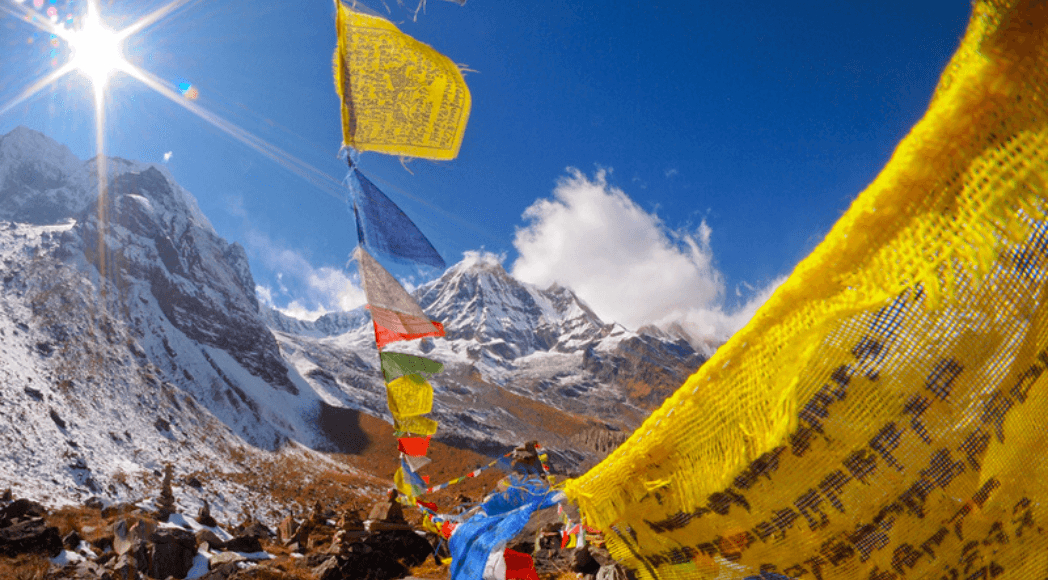
The Everest Base Camp trek offers more than mountains, it’s an epiphany of the culture of sherpas, the culture of Nepal, and the history each mountaineer is honored to be a part of. From living in some of the highest habitable places on Earth to talking to the humble locals who have seen the mountains for centuries is not something any one of us would want to miss out on.
History of Everest Base Camp Trek
The history of the Everest Base Camp Trek is closely intertwined with the history of mountaineering expeditions to Mount Everest. Here’s a detailed account of the history of the Everest Base Camp Trek:
- Early Exploration:
- In the early 20th century, explorers and mountaineers began venturing into the Everest region, fascinated by the towering peaks of the Himalayas.
- In 1921, the British Mount Everest reconnaissance expedition, led by George Mallory, conducted the first detailed survey of the Everest region.
- Mallory’s team explored the Khumbu Valley and identified suitable routes for further expeditions.
- Early Mountaineering Expeditions:
- The British made several attempts to conquer Mount Everest in the 1920s and 1930s. These expeditions played a significant role in opening up the region for future trekkers.
- In 1922, the British Mount Everest Expedition made the first serious attempt to climb Everest. Although they didn’t reach the summit, they set altitude records and paved the way for future endeavors.
- In 1924, Mallory and Irvine attempted to reach the summit but disappeared on their ascent. Their disappearance added a sense of mystery and allure to Everest.
- First Successful Ascent and Initial Trekking:
- On May 29, 1953, Sir Edmund Hillary and Tenzing Norgay became the first climbers to reach the summit of Mount Everest.
- This successful ascent drew global attention and sparked interest in the Everest region as a destination for adventurous travelers.
- In the following years, mountaineers and trekkers started exploring the Everest region, including the trek to Everest Base Camp.
- Early Development of the Trek:
- In the 1960s, the Nepalese government recognized the potential of trekking in the Everest region and started developing basic infrastructure to accommodate trekkers.
- The first teahouses and lodges were established along the trekking route to provide shelter and food for trekkers.
- The route to Everest Base Camp, which starts from Lukla and passes through Namche Bazaar, became increasingly popular among trekkers.
- Growing Popularity and Infrastructure Development:
- In the 1980s and 1990s, the Everest Base Camp Trek gained significant popularity as more adventurers sought to experience the Himalayas and the iconic base camp of the world’s highest peak.
- The number of teahouses, lodges, and other facilities along the trekking route increased to accommodate the growing number of trekkers.
- Communication infrastructure, such as internet and telephone services, also improved in the region.
- Modern Era:
- In recent years, the Everest Base Camp Trek has become one of the most popular treks in the world, attracting thousands of trekkers annually.
- The trek offers stunning views of the Himalayan peaks, including Everest, and allows trekkers to experience the unique Sherpa culture and hospitality.
- Environmental and conservation efforts have been implemented to ensure the sustainability of the trek and protect the fragile ecosystem of the Everest region.
Today, the Everest Base Camp Trek continues to be an iconic adventure for trekkers, providing an opportunity to witness the grandeur of Mount Everest and immerse oneself in the rich cultural heritage of the Sherpa people.
Keypoints for Everest Base Camp Trek
| Total Distance | 108 km |
| Total Time | 12-13 days |
| Best Time to visit | Summer Season (April-June)Winter Season (September-Mid November) |
| Base Camp | Kathmandu (Lukla) |
| Difficulty Level | Difficult |
| Altitude | 18,200 ft |
| Approx. cost (per adult) | 45,000-70,000 |
Everest Base Camp Trek Gallery

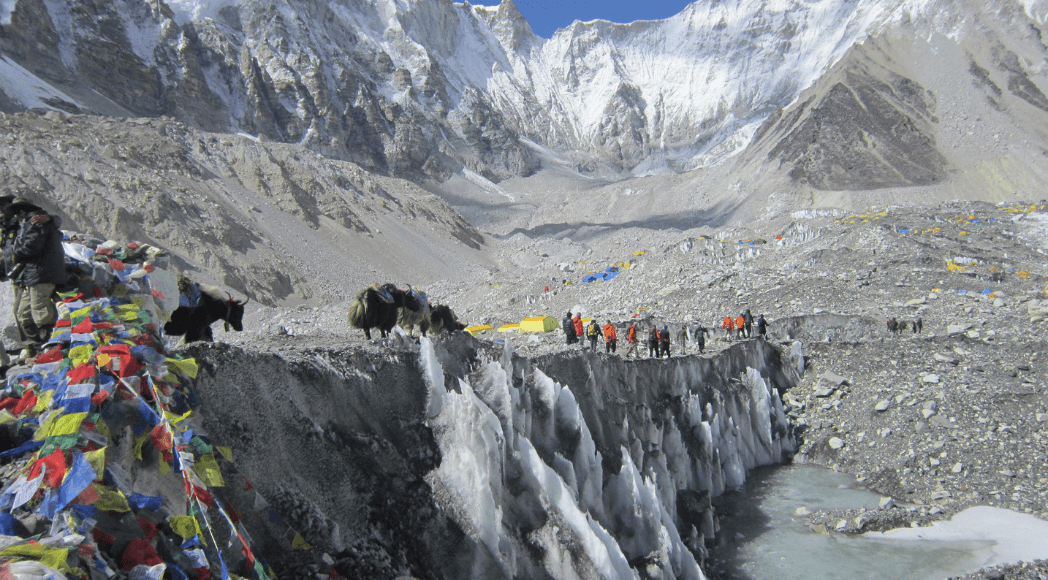

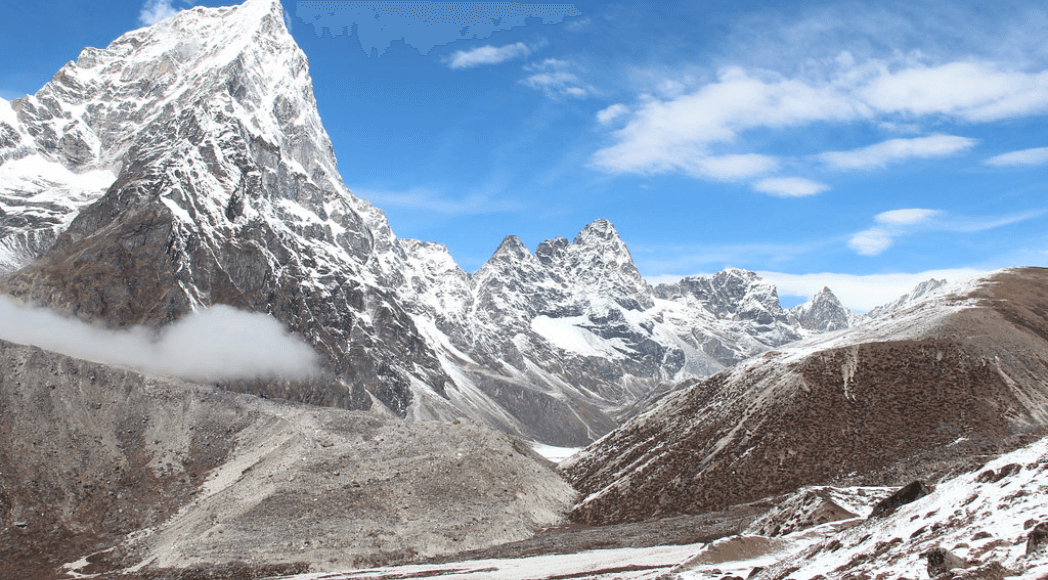


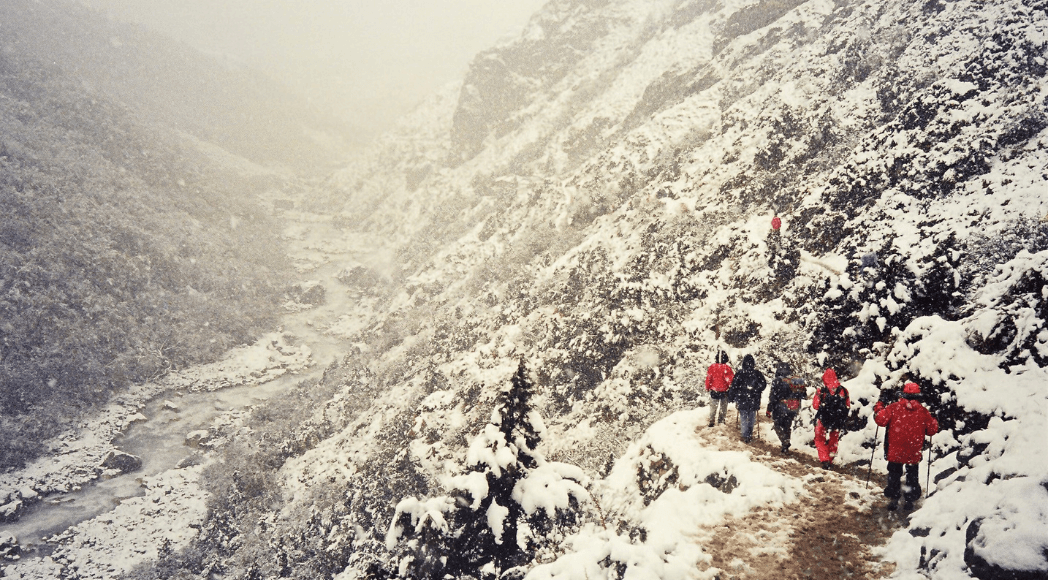
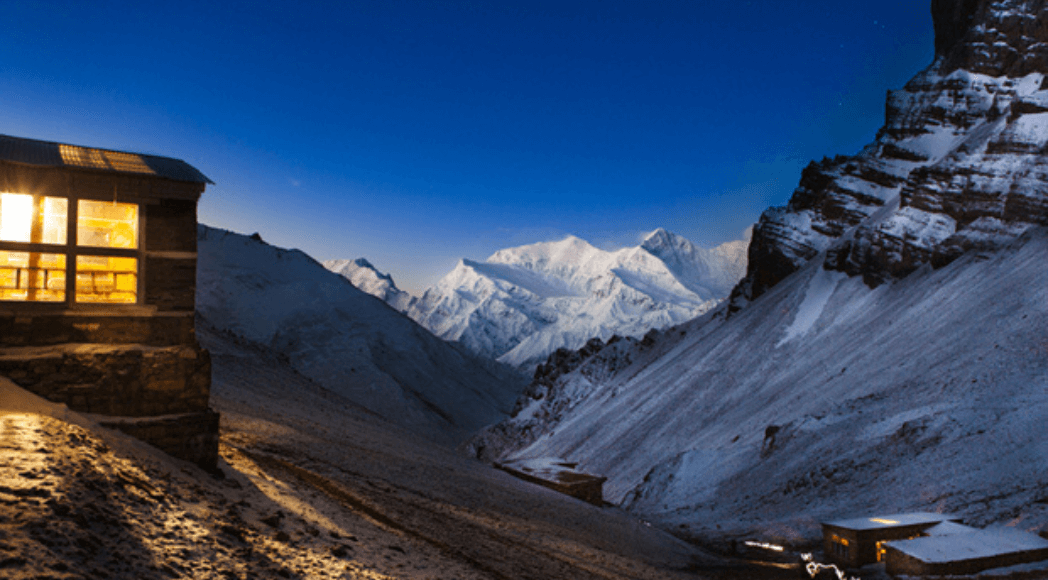
Highlights of Everest Base Camp Trek
Here are some of the high points of the Everest Base Camp Trek which will definitely convince you for the trek.
Kalapatthar Viewpoint:
One of the highest viewpoints of the Everest region, offering a panoramic view of the highest peak in the world and helping you admire the wonders of nature from the closest distance possible.
Tengboche Monastery:
Standing in its glory is the biggest and the oldest Buddhist Tengboche Monastery in the magnificent Sherpa village of Tengboche.
Khumbu & Ngozumpa Glaciers:
Khumbu & Ngozumpa are the biggest and longest glaciers of Nepal respectively. Khumbhu is 12 km long and Ngozumpa is 36 km long, which are also considered among the prominent glaciers of the planet
Culture of the sherpas:
The entire trek of Everest Base Camp is surrounded by the sherpa community and their culture has an unspoken charm to it. It is considered to once in a lifetime opportunity to experience the sherpa culture, be a part of their day-to-day life, and see for yourself what it is like to live in one of the highest habitable places n Earth.
Sagarmatha National Park:
The highest national park in the world housing some of the rarest species of flora and fauna is also a well-known World UNESCO site.
Namche Bazar:
Namche Bazar aka the Sherpa capital is a small town located on a steep-mountain bowl-shaped and a treat for those wanting to explore Sherpa culture in depth. Hillary Museum is also located in this town and is an honor for every mountaineer.
Technicalities of Everest Base Camp Trek
Here are some of the technicalities related to documents and other issues you must be aware of before your Everest Base Camp Trek.
- Foreign nationals are required to carry their passport and visa while booking and on arrival.
- A pre-requisite to doing Everest Base Camp Trek is that the trekker must have done at least 1 trek of the 4000m category.
- Avoid bringing non-biodegradable items.
- Usage of alcohol or any intoxicating substance is strictly prohibited.
- Carry a valid id proof in the offline format as the network is a rare occurrence of higher altitudes.
- Minimum age of people trekking is 15 yrs, one younger than this must be accompanied by a guardian and the one in the 15-18 yrs age group can trek alone with written consent from a guardian.
- Carry enough cash to last all your expenses as no ATMs are available on the trek route.
- Carry breathable and easily layered clothing to beat the sudden ups and downs of temperature.
- Electronics power down very easily in cold temperatures so use them wisely and teahouses or stays might charge you extra money for charging the electronics.
Physical Fitness for Everest Base Camp Trek
Here are some key aspects of physical fitness that can help you prepare for the Everest Base Camp trek:
- Cardiovascular Endurance: Building your cardiovascular fitness is crucial since trekking involves long hours of walking uphill and downhill. Engage in activities like hiking, walking, cycling, or jogging to improve your cardiovascular endurance.
- Strength and Muscular Endurance: Developing strength and muscular endurance in your legs, core, and upper body can help you navigate challenging terrain and carry your backpack comfortably. Include exercises like squats, lunges, step-ups, planks, and push-ups in your training routine.
- Stamina and Long-Distance Walking: Gradually increase your stamina by going on long-distance walks or hikes to simulate the trekking conditions. This will help your body adapt to walking for extended periods of time.
- Flexibility and Stretching: Maintain flexibility through regular stretching exercises to prevent muscle stiffness and reduce the risk of injuries. Focus on stretching your leg muscles, hips, back, and shoulders.
How to Reach of Everest Base Camp Trek?
To reach Lukla, the starting point for the Everest Base Camp trek, you need to follow these steps:
- Fly to Kathmandu: The first step is to book a flight to Tribhuvan International Airport in Kathmandu, Nepal’s capital city. There are direct flights to Kathmandu from major international airports in various countries.
- Arrange a Lukla flight: Once you arrive in Kathmandu, you will need to book a domestic flight from Kathmandu to Lukla. Lukla has a small airport called Tenzing-Hillary Airport, and flights to Lukla are operated by a few local airlines. It’s advisable to book your Lukla flight in advance, as availability can be limited during peak trekking seasons.
- Travel to Lukla by air: On the day of your Lukla flight, you will need to go to the domestic terminal of Tribhuvan International Airport in Kathmandu. Check-in procedures can vary, so it’s recommended to arrive at least one to two hours before your scheduled flight time. The flight from Kathmandu to Lukla takes around 30-40 minutes, offering scenic views of the Himalayas.
Itinerary for Everest Base Camp Trek
Day 1: Reach Kathmandu
Altitude – 1400 m
- Reach Kathmandu airport or Kathmandu railway station.
- Stroll around the city and shop for anything you might need for the trek.
Day 2: Fly to Lukla and trek to Phakding
Lukla Altitude – 2850 m | Phadking Altitude – 2600 m Distance – 9km
- Take a scenic flight of duration 30-35 mins from Kathmandu to Lukla.
- Lukla is from where the Everest Base Camp Trek starts.
- You will then trek to Phakding through the lush green mountain villages of Nepal.
- The trek to Phakding will take around 4-5 hrs and reward you with a view of Mt. Khumbila.
- During the trek you will come across boulders carved with Buddhist prayers and corners filled with sherpa culture.
- You will stay overnight in Phakding
Day 3: Phakding to Namche Bazar
Altitude – 3450 m Distance – 10km Duration – 10 hrs
- Today you will trek to one of the highlights of Everest Base Camp Trek, Namche Bazar.
- Namche Bazar is the capital of the Khumbu region and a very significant place in the culture of Sherpas.
- It offers not only the first view of Mt. Everest on the Everest Base Camp Trek but also Mt. Kongderei and Mt. Thamserku.
- Walking alongside Dudh Koshi river you will also enter a UNESCO World Heritage Site, Sagarmatha National Park.
Day 4: Acclimatization Day
- Today is acclimatization day and a perfect opportunity to explore the Sherpa culture.
- Namche Bazar is a dream come true for every mountaineer as it houses the museum showcasing the mountaineering history, all about Everest, Sherpa culture, and whatnot.
- The place is perfect for any last-minute shopping, all sorts of internet cafes, ATMs, cafes, and restaurants are present here.
Day 5: Namche Bazar to Tengboche
Altitude – 3850 m Distance – 8 km Duration – 5 to 6 hrs
- The trek from Namche Bazar to Tengboche is an easy one, you will get to see Himalayan wildlife as well.
- The trek offers a panoramic view of Everest and other famous peaks.
- Before Tengboche is the biggest monastery in the area and after that, you reach the beautiful alpine village of Tengboche.
Day 6: Tengboche to Dingboche
Altitude – 4350 m Distance – 9 km Duration – 6 to 7 hrs
- The beautiful mountain view of the Himalayas will take you to Dingboche through the stone steps in the forests of Rhododendrons, conifers, and birches.
- The view of Mt. Ama Dablam is the highlight of the trek today. Lhotse and Nuptse also become very prominent in this region.
Day 7: Acclimatization Day
- Today is going to be the day to acclimatize to the higher altitudes.
- A small hike from here will give you a clear view of the world’s highest 6 peaks – Lhotse, Makalu, and Cho Oyu.
- The best way to utilize today is walking around the village so you get accustomed to the dropping oxygen levels.
Day 8: Dingboche to Lobuche
Altitude – 4950 m Distance – 7 km Duration – 6 hrs
- Today’s trek takes you through the alpine pasture. During summer, you can also see Yaks grazing in the region.
- You will witness prayer flags and stones which are the memorial for the mountaineers who have lost their life on Everest.
- You will also trek to the moraine of Khumbu glaciers and there you will stone monuments which are to pay respects to the mountaineers.
- As you climb to Lobuche the climb becomes difficult and takes you to the Thukla pass where Everest Memorial is situated.
Day 9: Lobuche to Gorkhashep
Altitude – 5150 m Distance – 6 km Duration – 4 hrs
- Today marks the day for which you came all the way as you finally reach Everest Base Camp.
- No outsiders or visitors are allowed to stay at Everest Base Camp, you can stay there for some time, and enjoy the fruits of your hard work but need to return to Gorkhashep the same day.
Day 10: Hike to Kalapatthar and return to Pheriche
Kala Patthar Altitude – 5550 m Distance – 4 km Duration – 3 to 4 hrs
Pheriche Altitude – 4300 m Distance – 15 km Duration – 6 hrs
- Gorkhashep is an amazing place to roam around and soak in all the Everest views before the descend, Gorkhashep is also important as it used to be the Everest Base Camp back in the 1950s.
- Kalapatthar is a vibe on its own and gives an equal sense of summit as any other mountain.
- Before reaching Pheriche you will come across Everest Memorial and pay your respects before descending down to stay at Periche for the night.
Day 11: Pheriche to Namche Bazar
Altitude – 3450 m Distance – 15 km Duration – 7 to 8 hrs
- The descent is easy as compared to the ascend but the route is long and beautiful at the same time.
- Enjoy the last few views of Everest and other magnificent beauties around.
- Explore Tengboche monastery and try meditating there.
Day 12: Namche Bazar to Phakding to Lukla
Altitude – 2600 m Distance – 19 km Duration – 7 to 8 hrs
- Roam around the places and take a stroll in Sagarmatha National Park.
- Today while descending the views of mountains will start to disappear with only occasional snippets.
Day 13: Fly to Kathmandu
- Fly back to Kathmandu.
- Today marks the end day of your Everest base Camp Trek.
Final Thoughts For Everest Base Camp Trek
The Everest Base Camp trek is an awe-inspiring and challenging adventure that offers a once-in-a-lifetime experience for those seeking to witness the breathtaking beauty of the Himalayas. The journey to Everest Base Camp requires physical fitness, determination, and a spirit of adventure. It is a trek that tests your endurance, as you navigate rugged terrains, steep ascents, and high altitudes. However, the reward is well worth the effort, as you reach the iconic Everest Base Camp and stand in the presence of the world’s highest mountain.
Along the way, you will pass through vibrant Sherpa villages, monasteries, and prayer flags, gaining insights into the local Buddhist traditions and way of life. It is not only a physical challenge but also a spiritual and introspective journey. The serenity and tranquility of the Himalayas offer moments of reflection and self-discovery, as you disconnect from the distractions of the modern world. It is an experience that will leave an indelible mark on your memory and inspire you to embrace the power of exploration and adventure.
Frequently Asked Questions (FAQs) for Everest Base Camp Trek
What is the height of Mt. Everest?
The height of Mt. Everest is 8848 m/29028.87 ft.
Where is Mt. Everest located?
Mt. Everest, the highest peak in the world is located in Nepal.
Where does Everest Base Camp Trek start?
Everest Base Camp Trek starts in Lukla, Kathmandu.
What is the difficulty level of the Everest Base camp Trek?
Everest Base Camp Trek is a difficult trek and requires intense physical health.
How long is Everest Base Camp Trek?
Everest Base Camp Trek is approx 108 km long and it takes 12-14 days for its completion.
How many days does it take to complete Everest Base Camp Trek?
It takes around 12-14 days to complete Everest Base Camp Trek.
What is the minimum age to do Everest Base Camp Trek?
The minimum age to do Everest Base Camp Trek is 15 years.
What is the best time to do Everest Base Camp Trek?
The best time to do Everest Base Camp Trek is April-June and September-Mid-November.
Where is Hillary Museum located?
Hillary Museum is a very important aspect of Everest Base Camp Trek and is located in Namche Bazar.
Who summited Mt. Everest for the first time?
Sir Edmund Hillary and Tenzing Norgay summited Mt. Everest for the first time.
What is the highest altitude of Everest Base Camp Trek?
The highest altitude of Everest Base Camp Trek is 5547.36 m/18,200 ft.


